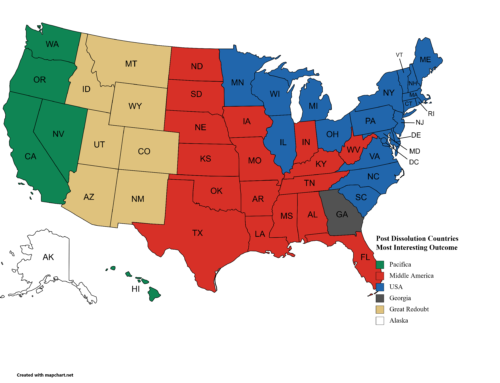This Coronavirus pandemic has interrupted individual lives and communal national lives to a degree unseen by younger generations in their lives. Older generations who lived through WWII are nearing the end of their lives and their memories of their lives during that time are fleeting. That means this pandemic is genuinely a new experience for whole populations. It was not just the flu. It was real. And it did damage to the economy that will take a long time to recover from.
There have been no end to predictions about what will happen and how lives will change forever. I find that most of those predictions, especially the most dire, are probably patently inaccurate. I’ll give you 3 prominent predictions and why they’re probably going to be wrong.
Social Distancing is here to stay. When the means by which people get infected by a novel illness is other people, and when simply distancing from others and wearing face masks dramatically decreases transmission, then it seems logical to assume that people will continue to practice the measures they adopted to prevent becoming ill. But that is unlikely to last.
We are social creatures. There is tremendous power in that need for contact that can be overcome for a short time and for specific purpose. As time goes by, and as people get fed up with isolation, and as more of the population gains antibodies, the natural human need for socialization will become stronger than the desire to not get sick.
When the disease is so new that that the effects are little understood, it is easy to accept isolation because that is an easier pill to swallow than is possible painful death. But as information becomes available, some of it truly horrific, rather than giving people impetus to remain isolated, the isolation is a worse outcome to nearly everyone than any effect of the illness.
Doctors can describe in great detail the effects of the illness in individuals. Epidemiologists can accurately describe how easily the virus is transmissible. But those doctors and scientists cannot impose on people a level of willingness to isolate in favor of not contracting a virus that may or may not do grave damage to that person. We can see now empirically through peoples’ collective behavior that individuals are willing to take their chances rather than remain socially isolated. And when summed across cities and states, that willingness is a tide that even the most well-intentioned elected leaders cannot hold back with unenforceable isolation decrees.
New York City is seeing people congregating in close proximity near bars that offer take-out orders. Georgia has avoided the predicted spike in cases as it opened early. Montgomery Alabama, on the other hand, could be a cautionary tale, in that every ICU bed in the city is now filled after the state’s easing of social distancing, but that news hasn’t, and likely will not, move the needle in any other places. Why? The urge to socialize is showing to be stronger in people than the urge to not get sick. This is not a value judgment about what ought to be. It is simply an observation of what is.
This reality will have implications that epidemiologists ought to be able to predict, even if they won’t necessarily like it. This means that instead of predicting the spread of diseases based on variables as scientists wish them to be, they need to do the math as people will likely behave. This does not mean that scientists are wrong. It also doesn’t mean that people are stupid. It means that the math ought to align more with how people will actually act than how certain people, whether scientists or politicians, would prefer people act.
So whether we like him or not, when the President says that the country will not close down if there is a second outbreak, that isn’t him making a decision on behalf of the people as much as it is him saying what everyone knows, namely, that the people won’t stand for another lockdown. That isn’t good or bad. It just is.
You can see this empirical reality played out in grocery parking lots where people who were just wearing masks inside the store to satisfy the local directive hug their friends and neighbors outside. You can see it play out when people break isolation to visit family members and grandkids in different cities and then wonder why they need to isolate from others if they accepted the risk to visit family. They understand the risk mathematics and make a calculated decision. Right or wrong, the sum of those calculated decisions is the unstoppable tide that politicians cannot affect by edict or even force of law.
Many/most businesses will permanently go remote. Zoom fever and work from home have seemingly taken over the business world. I asked last month what Crystal City (in Arlington, Virginia, across from D.C.) might look like if the companies leasing those buildings drastically scale back their physical presence and allow their employees to work from home. I think this prediction is a toss up.
Some types of business models allow for work-from-home with as good or better corporate results as getting everyone in an office. Twitter and Facebook are among a slew of companies that recently announced allowing employees to choose whether to work from home “forever.” For those types of businesses, it doesn’t matter whether code writers and engineers are in the same place or whether they spend their day in contact through multiple windows with their teammates scattered across the country. My own experience at Babel Street demonstrated how easily that model worked. My experience there also demonstrated how important a central physical space was for those times when people from various teams needed to get together or to provide demonstrations to and negotiate with prospective clients.
But not all businesses are amenable to distributed work. Laboratories, schools, the DMV and county clerk’s offices are a few examples of places that need to be centralized and need people to work together in close proximity. That is a function of the mission. And for many people, whether or not they can do the work from home, the desire for social proximity is a greater desire than being out of the boss’s field of view.
On the other hand, I think that more businesses will come to realize that the previously thought need to be in a particular location is not really a requirement as much as a previous way of doing business. For example, my financial manager tells me he has found having meetings with clients over zoom to be so easy and so acceptable that he may not need to go back to the office at all when the pandemic subsides.
Companies will use the data generated by this natural experiment and adjust their strategies accordingly. Some will see that the potential loss of efficiency by spreading people out to their homes is more than acceptable when compared to the savings on leasing office space and paying for utilities. Some will take a portion of the money saved by not leasing an entire building and give some of that to their employees to help cover their internet access while pocketing the rest. Others will offer their employees the option to work from home for a little less money or go work from the office for a little more. These differences will offer natural experiments for economists and social scientists for years to come.
Cities will empty out or change forever. I find it interesting to think that if cities are humanity’s greatest invention, they will suddenly empty out for good because they are also a petri dish in which viruses spread. Yes, New York City accounts for an out-sized proportion of American Covid-19 cases and deaths, as did Milan for Italy and Wuhan for China. But those cases also tell us that Rome and Naples were not nearly hard hit as was Milan, nor were San Francisco or Chicago like New York. While the math of infectious spread is unavoidable, differences in leadership and strategy can easily be seen to account for differences in outcome.
Density and crowding, especially in public transportation are the price people pay for living in the city. The disparity in income between those who can easily distance themselves and those who work in service and must accept crowded subway cars is great. It is a feature of cities, not an aberration. People don’t have to like it, but they know and accept it going in.
What may change is that some businesses will move from more densely packed cities like New York to less densely packed cities like Cincinnati or Pittsburgh or Salt Lake City. Some people will move to those cities in search of greener pastures for their families. But cities will continue to adapt. The very thing that made Indianapolis a place for people to move to has turned it into a city of more than 800,000 in its own city limits. Lexington is now bigger than Cincinnati (again city limits, not metro area). People may be moving from bigger cities to smaller ones, but they’re still moving to cities.
The point is that cities will remain. Cities will continue to grow. Some cities will shrink even as their metro areas continue to grow as people move to suburbs and exurbs. But New York and Shanghai and London and Buenos Aires are not in danger of disappearing. Those cities will adapt even as pandemics increase in frequency. They will naturally develop strategies to operate in healthy and pandemic times. They will have distancing norms and free association norms that will come into play as the situation dictates.
And because cities will remain, the elements associated with cities, especially restaurants, museums, parks and other gathering spaces, will also remain. While many are predicting that up to 75% of independent restaurants will fail due to the Covid-19 pandemic, when life resumes at a new normal, the need for restaurants will mean that others will replace the ones who could not remain open.
It is natural that businesses which operate on the thinnest of margins month to month cannot survive even one month without revenue. But it is also natural that the need gets filled in an economy. And in large dense cities where people do not want to cook every night, that means a need for a lot of restaurants. It stands to reason that for nearly every restaurant that goes under during this pandemic, very likely another will replace it when the pandemic is over and people are eating out again.
In two years when this pandemic is over and everyone is either vaccinated or has immunity from antibodies, there will be a renormalizing of society. You will almost certainly not see people wearing masks in grocery stores. Restaurants will almost certainly be filled to capacity. Airlines will happily pack people into seats that people will happily pay for.
However, businesses, governments and individuals will, for at least one generation, be primed to shift back into isolation and social distancing mode when the next pandemic even appears to break out. Businesses will develop strategies for shifting back and forth. Restaurants will be ready to mark off tables allow distancing. Airlines will quickly implement distancing protocols. People will be ready to adjust for one generation or until the next pandemic restarts the preparation clock.
Keep thinking…






Leave A Comment